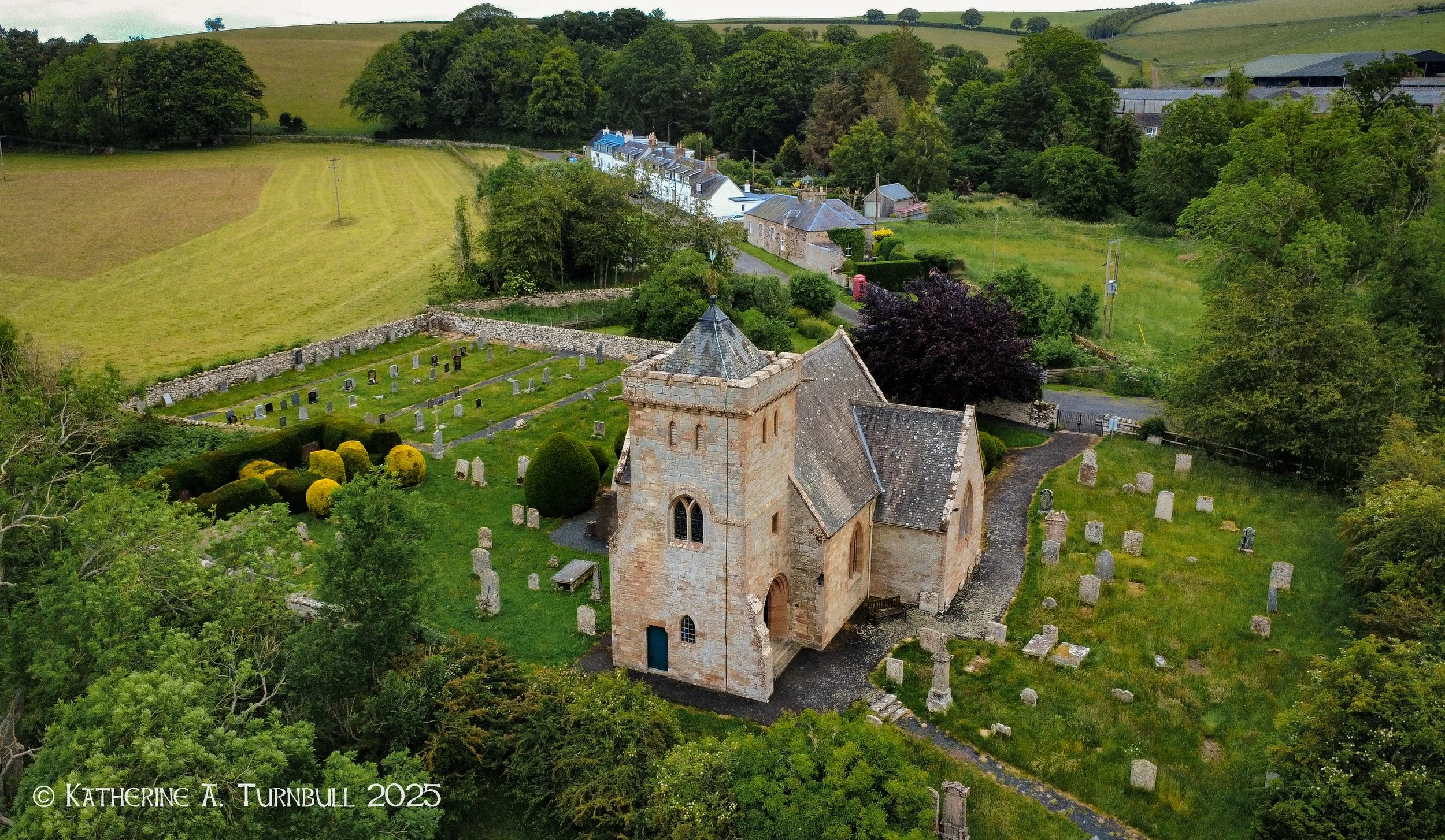Bedrule Church
Since the thirteenth century there has been a site of worship where Bedrule Church now stands.
Today’s church holds fascinating histories and artefacts of significance to the wider community, it is a seat for Clan Turnbull who are spread across the world, and is next to an archeological site that continues to provide insight into the iron age.
The Location
Bedrule Church sits above the Rule Valley and in direct view of Ruberslaw; an iconic local hill purportedly used as a Roman signal station, and now a magnet for walkers seeking the best view of the Borders. Below, the River Rule weaves its way between grand houses, stone cottages, traditional farms and family-run tourism offerings. Rulewater is a little known but much loved rural haven that also holds several sites of historical significance, such as the atmospheric ruins of Fulton Tower - a stopping point for Mary Queen of Scots - and Bedrule Castle which now hosts an archaeological dig next to the church.
There are plenty of beautiful country strolls nearby, but for the more adventurous, the Borders Abbey Way - a longer distance route - runs right past Bedrule Church linking it with the historic towns of Jedburgh, Kelso and Melrose.
The Clans
The Honorary Chief of the Turnbull Clan recently described Bedrule Church as their “ground zero”.
The Clan’s connection with Rulewater is deep and long lasting, having been resident here from early times. The Turnbull name was earned through an act of bravery by William of Rule around 1300, when he saved Robert the Bruce from a charging bull. He became dubbed “Turn y Bull” and was rewarded with the Barony of Bedrule. Locals believe this happened in Bull Field across the valley from the Church, then part of the King’s Jed Forest hunting grounds. Turnbull’s remain in the area and also have a large international diaspora in the United States, Canada, Australia and beyond.
The People
The lives of several interesting historical figures are linked with the church, particularly William Turnbull, who was the Bishop of Glasgow between 1447 and 1454, the Borders’ most famous writer Sir Walter Scott, and Lt Anthony Fasson who gave his life recovering the enigma machine and integral codebooks from a German submarine in WWII. You can read more about these personalities and others, such as the minister who had a reputation for addressing the problems of changelings and faeries, in this blog post from Roger Curtis.






